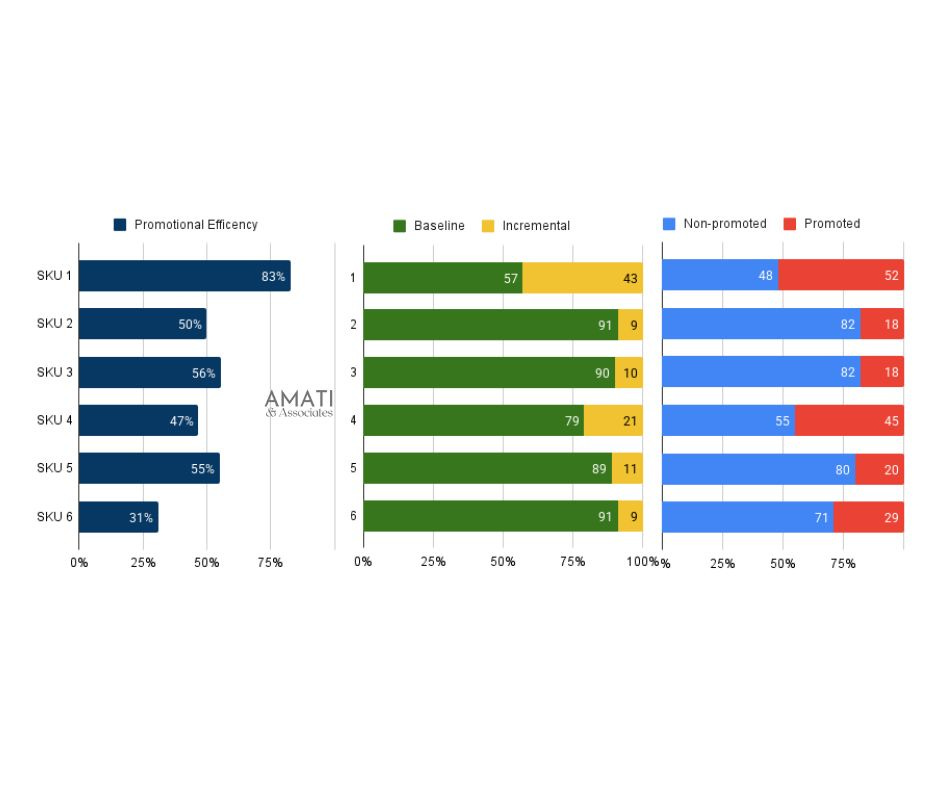Frugal Budgets, Aggressive Targets, Uncertain Conditions, and the Art of Creating Business Value and Resilience
Welcome 2025!
Introduction
Frugal budgets. Aggressive targets. Uncertainty at every turn.
Welcome 2025!
This is the reality every CEO and CMO in the consumer goods world faces today. Marketing and commercial budgets are shrinking, uncertainty is a constant, and the pressure to deliver results has never been more significant. But here’s the kicker: succeeding in this environment isn’t about doing more with less. It’s about doing better.
If your budgets are tight and your targets are ambitious, you can’t afford to waste a penny—or a minute. The winners are the ones who embrace frugality without losing their edge. Who set bold goals without overreaching. Who adapt to uncertainty without hesitation.
This is not business as usual. It’s a wake-up call to rethink everything—from how you spend to how you grow and build resilience in an unpredictable world.
It’s a call to re-learn how growth drivers are evolving and how to build brand and business resilience.
Frugal Budgets – Stop Wasting, Start Focusing
Frugal doesn’t mean cheap. Frugal means smart. It means wringing every ounce of value out of every resource. And let’s be honest: most budgets are bloated.
You know it. I know it.
In the tech world, we often celebrate Unicorns’ ability to raise money at an increasing valuation. But how is this money spent? Metaphorically speaking, most of this money is thrown at a wall to see what sticks.
The landscape in FMCG is not better. Most companies rely on outdated profit-and-loss metrics and bloated line items unrelated to performance. It’s time to cut the fat and focus on what drives results.
Here’s how:
Set Realistic Goals: Forget the endless wish lists. Nail down a clear, long-term vision, then break it into small, achievable wins. Frugality isn’t about dreaming smaller—it’s about hitting targets that matter.
Adapt Fast: The market doesn’t wait, and neither should you. Build agility into your budgeting process so you can pivot quickly when opportunities arise—or when the ground shifts beneath you.
Use Value Driver Trees: Don’t get lost in spreadsheets. Identify the handful of metrics that truly matter—volume growth, price realization, or category dominance—and allocate every dollar to moving those needles.
In a mid-sized Beverage company, I once increased revenues in the double digits, year-over-year, by focusing on two dimensions: cutting all promotional trade investments on products that could not be profitable and reallocating them to underinvested customers on products that would drive shopper recruitment.
We didn’t spend more—we spent better.
How? For example, by focusing trade spent on products with better promotional efficiency, SKUs that—when promoted—are more likely to generate incremental sales instead of subsidizing sales.
Aggressive Targets – Aim High or Step Aside
Frugality without ambition is just survival. And let’s face it: you’re not here to survive. You’re here to win.
Aggressive targets are the antidote to complacency. But they’re not about reckless overreach. They’re about pushing your team to think bigger, act bolder, and move faster—all while staying grounded in reality.
How to Set Bold (but Smart) Goals:
Benchmark Ruthlessly: Don’t just look inward—look outward. How does your ROI stack up against the competition? What’s their market share? Their growth rate? You're not aiming high enough if your goals don’t scare you a little.
Plan for Chaos: Stop pretending the future will unfold as planned. Create scenarios for the best, worst, and everything in between. This isn’t pessimism—it’s preparation. It also sends a signal to the organization that changes might happen mid-flight. The single most significant hurdle to this is in-company politics.
Building Resilience in Uncertain Conditions – The Art of Thriving Amid Chaos
Uncertainty isn’t going away. It’s not a phase. It’s the new normal.
So, the question isn’t “How do we survive uncertainty?” It’s “How do we thrive in it?”
Here’s the Playbook:
Embrace Agility: Stop clinging to rigid plans. Build a culture that celebrates adaptability. The faster your team can pivot, the quicker you can turn disruption into opportunity.
Build Future Scenarios: By leveraging foresight and future studies, you can better understand possible diverging routes and increase your readiness for change.
Engage Stakeholders: Uncertainty breeds fear. Transparency breeds trust. Keep your employees, partners, and investors aligned by sharing your vision and results every step of the way.
Strategic Resource Allocation – Follow the Money, Create the Value
Let’s cut to the chase: where you spend matters as much as how much you spend.
Too many companies are pouring money into categories that are going nowhere. Why? Because they’re stuck in legacy thinking.
Break the Cycle:
Find the Growth: Analyze revenue pools to identify where the money is and where it will be. Then, focus on those categories.
Kill the Dead Weight: Stop throwing good money after bad. Cut the low-growth, low-margin products and reinvest in winners.
Use Data, Not Gut Instincts: Advanced analytics aren’t a luxury but a necessity. Let the numbers guide your decisions.
Real-World Win:
A mid-market beverage company slashed its underperforming SKUs and funneled resources into a smaller product line. The result? A 25% revenue jump in two years. They stopped recruiting smaller outliers and focused on penetration and repeat business. The lesson? Be ruthless.
A Framework for Decision-Making – Clarity is Power
You’ll get the wrong answers if you ask the wrong questions. And right now, too many CPG leaders are flying blind.
Ask Yourself:
Does this initiative really align with our strategic priorities?
Will it deliver measurable results within this cycle or the next?
Is it scalable and cost-effective?
Are we wasting time on complexity when simplicity will do?
The Bottom Line:
Focus on less. Deliver more. The path to value isn’t cluttered with distractions—it’s sharp, direct, and focused.
Conclusion
Let’s recap.
Frugal budgets don’t mean shrinking—they mean sharpening.
Aggressive targets don’t mean reckless—they mean relentless.
Uncertainty isn’t a threat—it’s an opportunity.
CPG leaders who embrace this mindset will emerge stronger, leaner, and more competitive than ever.
So, ask yourself: Are you ready to challenge conventional wisdom? Are you ready to cut the noise, double down on what works, and build a company that thrives—not just survives?
The playbook is here. Now it’s time to act.
Bold. Focused. Resilient. That’s how you win.






